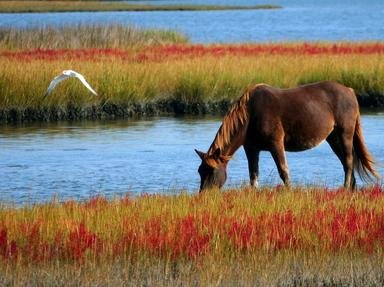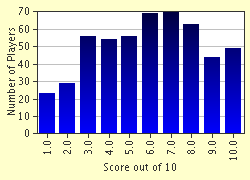Quiz Answer Key and Fun Facts
1. Which horse was originally bred in Northern England as a pack horse but is now more usually seen as a carriage horse?
2. Which moorland pony stands 11.3 - 12.3 hands high, is bay, brown or dun and is described as having a characteristic "mealy muzzle" and "toad eye"?
3. The oldest English draught breed is next. This horse is always chestnut and is very stocky and powerful. It used to be widely used as a farm horse but is now on the rare breeds critical list as numbers have fallen - which is it?
4. The next British pony is always born black or bay but changes colour as it matures. Which of these is it?
5. Which stocky pony is nearly always grey or mousey in colour and nearly always has an "eel stripe" along its back? It is friendly and sensible in nature and makes a good family pony.
6. Which hardy English moorland pony was originally used as a pack pony for the tin-mining industry but is today more often used as child's riding pony?
7. Which English working horse can stand as high as 18 hands and weigh up to a ton? It has heavily feathered, long powerful legs and a friendly nature.
8. Which two sturdy pony breeds are very similar to look at, both normally being dark coloured ponies standing about 14hh and both originating from the North of England?
9. Which tough pony is described by the breed society as being Section A, B, C or D, depending on how big and solidly built it is?
10. Which is the large draught horse which was developed in Scotland from native mares and imported Flemish stallions?
Source: Author
Mink
This quiz was reviewed by FunTrivia editor
crisw before going online.
Any errors found in FunTrivia content are routinely corrected through our feedback system.

